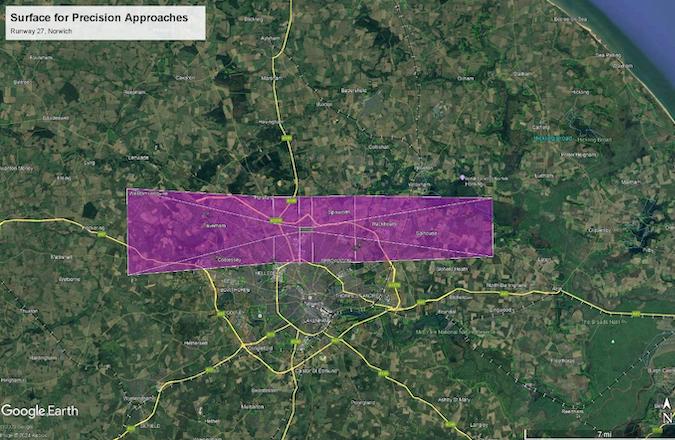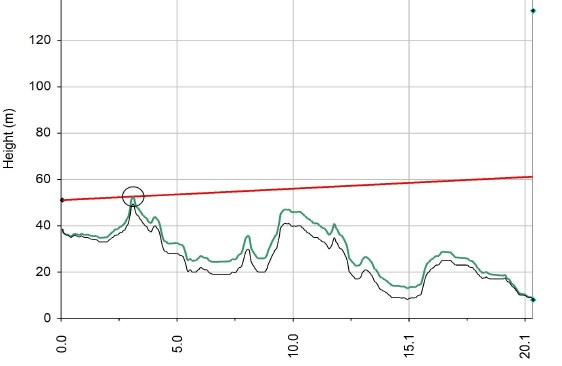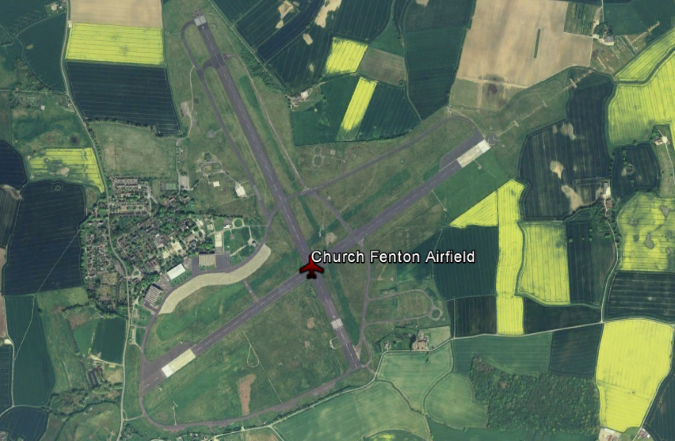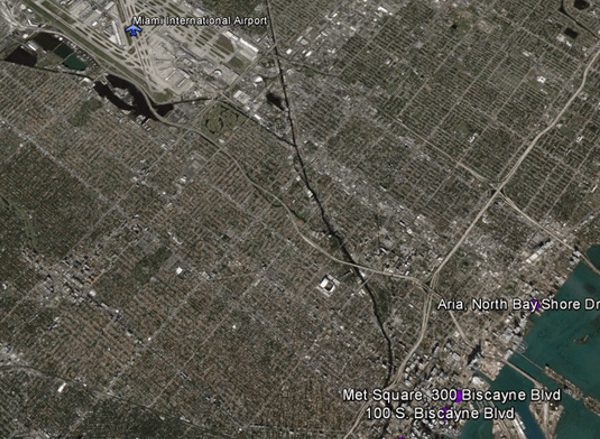The International Civil Aviation Organization (ICAO) has proposed new obstacle limitation surfaces (OLS) which are expected to be brought into force from November 2028. In this edition we will explore the Surface for Precision Approaches. This will be an Obstacle Evaluation Surface (OES), designed specifically to safeguard approaches with an instrument landing system.
Figure 1: Pager Power modelling output for a potential Surface for Precision Approach at Norwich Airport Runway 27, overlaid on Google Earth imagery. This consists of the approach component (right trapezium), missed approach component (left trapezium) and transitional component (above and below) . This figure is given for illustrative purposes only [1].
What is the difference between OFS and OES?
The new OLS is expected to be split into two types of surfaces. The OFS aim to protect airspace in the immediate vicinity of the aerodrome, and will provide protection for all designated airspace that aircraft will travel through or near when arriving or departing. The rules are expected to be enforced quite rigidly, with 4.4.4 of the ICAO State letter [2] stating that:
“New objects or extensions of existing objects shall not be permitted above the approach surface, take off climb surface and transitional surfaces and the complex surface extending between the lower edges of the transitional surfaces [obstacle free surfaces].”
This places an effective ban on any new obstructions breaching the OFS. The Surface for Precision Approaches is however one of the surfaces with less strict criteria governing its safeguarding, with paragraph 4.4.8 [2] stipulating:
“States shall ensure that obstacles penetrating the obstacle evaluation surfaces are only permitted when, after aeronautical study, it is determined that the obstacles do not adversely affect the safety or significantly affect the regularity of the existing and intended operations of aeroplanes.”
With the OES, further study may reveal that a breach of the surface and aircraft operations can coexist. This is commensurate with the differing purposes of the surfaces, with OES generally inclined towards safeguarding airspace that some aircraft might use, as opposed to that which all aircraft will use.
Does a similar surface currently exist?
There is a set of safeguarding surfaces known as Basic ILS Surfaces referred to in PANS-OPS [3], which are designed to be the first stage in assessing the obstacle clearance for ILS, MLS, GLS and SBAS CAT I approaches. These in turn are based on the approach and transitional surfaces for code 3 and 4 runways as defined in the existing set of Obstacle Limitiation Surfaces.
These surfaces are currently checked as part of an Instrument Flight Procedure (IFP) assessment and unlike some of the other OLS we have seen thus far a breach of this surface typically implies the need for further assessment as opposed to an obstacle being disallowed outright. In section II-1-1.4.7.3.2 of PANS-OPS [3] it is stated that:
“If the basic ILS surfaces listed above are penetrated by objects other than those hsted in Table II-1-I-3, the OCA/H may be calculated directly by applying height loss/altimeter margins to obstacles (see 1.4.8.8, ‘Determination of OCA/H with OAS or basic ILS surfaces’).”
Notice that this reference to an OCA calculation could, in this instance, be construed as a further aeronautical study undertaken to permit an obstacle breaching a surface, which would suggest that the current enforcement of the ILS Surface is already quite similar to that of the new OES.
The New Surface for Precision Approaches – A move to the OLS
The new OLS will have the Surface for Precision Approaches as an Obstacle Evaluation Surface. It is ostensibly the replacement for the Basic ILS Surfaces in PANS-OPS and indeed it even has the same dimensions. It is also in part a replacement the Approach surface in the case of what are currently code 3 and code 4 runways. Note that the new Approach Surface, which will become part of the OFS, is expected only to go out to a maximum of 4500 metres from the threshold. This compares to up to 15000 metres for the existing OLS [3,4], and the outer extremities of this surface are therefore being covered by the Surface for Precision Approaches.
The surface will for each approach (threshold) will comprise an approach component, a missed approach component and a transitional component.
The approach component for all aircraft design groups (I-V) safeguards the approach itself and has the same dimensions as the existing approach surface for code 3 and code 4 precision approach runways. It starts 60m before the threshold at a width of 300m, ascending at 2% and then 2.5% at a 15% splay out to 12600 metres from the threshold.
The missed approach component protects aircraft in the event of a missed approach. It starts 900m after the threshold, also has a 300m width and climbs at 2.5%, first with a splay of 17.48% and later with a splay of 25%, to reach a length of 12000m.
Both the approach and missed approach segments start at the height of the runway threshold.
The transitional component extends from the edge of the approach component/strip/missed approach component at a gradient of 14.3% to a height of 300 metres above the threshold elevation. Note that the gradient is the same as that of the transitional surface in the existing OLS. There are, however, two important differences between this transitional component and the transitional surface of the existing OLS. The first is that the transitional component continues all the way to 300m above the threshold, in contrast to the existing transitional surface which finishes at the Inner Horizontal Surface (IHS), 45m above the lowest threshold at the aerodrome in the case of the existing OLS. The second difference is that while in the existing OLS the bottom edge of the transitional surface tracks the height of the runway centreline along the strip, the height of the bottom edge of the transitional component along the strip is equal to the height of the runway threshold throughout.
These dimensions are the same for all aerodrome design groups, and are identical to those currently being used for Basic ILS Surfaces.
Figure 2: Plan view of the Surface for Precision Approaches, as can be found in the ICAO State Letter [3].
How can Pager Power help?
Pager Power has a model for the new ICAO OLS as it is set out in [2]. Pager Power is able to undertake initial modelling of these surfaces and can offer initial consultation to developers and airports who require clarity on the new rules that are to be brought into force, having over 20 years of experience in the aviation sector.
More on Pager Power’s new ICAO OLS Modelling can be found here.
About Pager Power
Pager Power undertakes technical assessments for developers of renewable energy projects and tall buildings worldwide. For more information about what we do, please get in touch.
References
[1] Pager Power modelling output, visualised in Google Earth.
[2] ICAO State Letter (Reference AN 4/1.1.58-23/33)
[3] ICAO, Annex 14 to the Convention on International Civil Aviation, Ninth Edition, July 2022 Volume I
[4] CAA CAP 168, Licensing of Aerodromes
Thumbnail image accreditation: Stefan Gabriel Naghi (2018) from Pexels.com. Last accessed on 16th September 2024. Available at: https://www.pexels.com/photo/white-airplane-912619/





